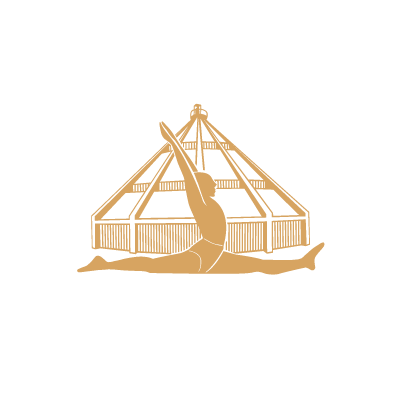by Richard Jonas
Home Practice is the core of yoga. Class is great – but there is more, much more to yoga. Practicing on your own is too important to miss out on. When you begin to practice at home you really learn, really experience the transformative effects of yoga – on body, mind and spirit.
How can you get a Home Practice? Get up tomorrow – practice – then do it every day after that. If that sounds daunting, here are some hints that might help you get started and stay with it.
Start slow. Students tend to set the bar too high when they start a Home Practice. If they don’t make it through an hour of perfectly sequenced poses, they get disappointed and give up. Instead, do a few poses that you know and feel confident with. When you’ve finished, lie down for a five-minute Savasana. Ten minutes and you’ve got a Home Practice!
Be disciplined. Make Home Practice a priority. Do it every day. Keep with it for two weeks, then see if you feel better, physically and mentally. See if it gets easier. Pretty soon your 10-minute practice will grow to half an hour. Give yoga some space and time, and it will make a place for itself in your life.

Time and place: Choose a time of day and a place where you won’t be disturbed. If you can, set aside the same time each day. First thing in the morning is good; wait until later and you might get caught up in your schedule. In the morning the body may be stiff, but the mind is quiet and receptive – very important. If afternoons or evenings work better for you, practice then.
Do what you know. Start with a few simple, familiar asanas like Adho Mukha Svanasana(Downward Facing Dog) and Adho Mukha Virasana, (Downward Facing Virasana). Follow with a few standing poses: Utthita Trikonasana (Extended Triangle), Utthita Parsvakonasana (Side Angle Pose) and Virabhadrasana II (the second Warrior Pose). Finish with a seated forward bend, maybe Paschimottanasana, or lie with your legs up the wall. Then rest for several minutes: even if you’re short of time, always practice Savasana (Corpse Pose).
Cultivate the voice inside, the teacher inside yourself. (Maybe at first you’ll hear your class teacher’s voice reminding you to lift your kneecaps or extend your elbows.) If you’re not sure about something, ask your teacher later. If it doesn’t feel right, stop. Don’t do poses you don’t feel confident with; save them for class when you can be supervised.
Work by the book. B. K. S. Iyengar’s Light on Yoga is the bible of modern yogis in every method; Geeta Iyengar’s Preliminary Course has detailed, step-by-step instructions and drawings to help you through the poses. The Mehtas’ Yoga the Iyengar Way has big color photos.
When you’ve been self-practicing awhile, you might try this: After your next class, try to remember the poses your teacher taught and write them down, in order. If you don’t know the names, describe them or draw a little sketch. The more you do this, the easier it becomes. Then next day, recreate the sequence – or part of it – at home on your own. See if you can remember the points your teacher made. When you do poses a second or third time – when you become your own teacher – the learning deepens; the experience becomes more profound, and more truly your own.
Props: Buy a mat and three blankets (you’ll need them for Salamba Sarvangasana, Shoulder Balance, vital to your practice). A belt and a block or two are very useful. Use a timer to build up time in your inversions.
Sequencing the postures: Generally begin with standing postures, then go on to inversions, backbends, twists and forward bends. Often Sarvangasana is done towards the end of a sequence. If you do Sirsasana (Head Balance), it must be followed with Sarvangasana or another pose (such as Setu Bandha) which creates the Jalandhara bandha, the conjunction between the chin and the top of the sternum.
Do the pose every way. Try the pose many different ways. For example, do Utthita Trikonasana with your front foot up the wall – with the back heel at the wall – with your back to the wall. The goal isn’t to find the way that works best for you, then always do it that way. Experience the pose from every angle. Learn all about it. We want to be as familiar with these poses as with a room we know so well that we can walk around it in the dark, without bumping into the furniture. In time, the poses become a template we can use to explore our minds, our senses, our emotions, our place in the world and our relationship to the Higher Power.

Richard Jonas
faculties Member of the Iyengar Yoga Association of Greater New York More Information
